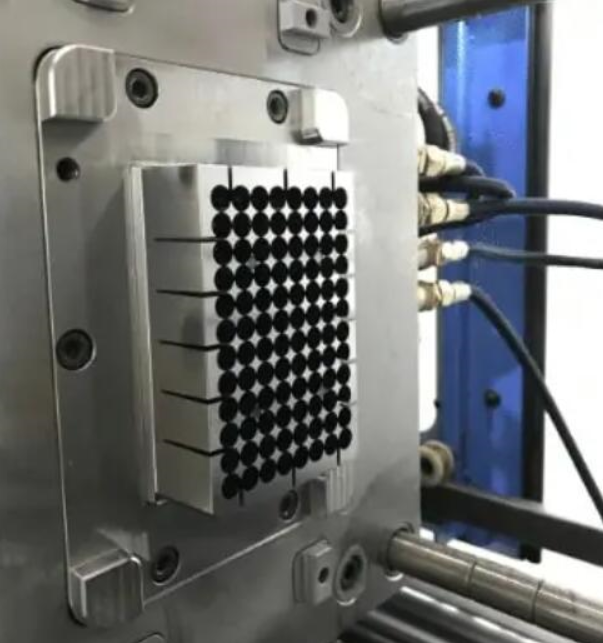Aerospace Mold: Revolutionizing Aviation Manufacturing
In the ever-evolving aviation industry, advancements in technology play a crucial role in pushing the boundaries of flight. One such breakthrough innovation that has revolutionized aviation manufacturing is the aerospace mold. This cutting-edge tool has transformed the way aircraft components are fabricated, leading to improved efficiency, enhanced precision, and ultimately, safer and more reliable aircraft.
What is an Aerospace Mold?
An aerospace mold, also known as a die or tooling, is a specialized tool used in the manufacturing of aircraft components. It is designed to shape and form various materials such as metal alloys, composites, and plastics into specific shapes and sizes. The aerospace mold is typically made from high-strength materials, such as steel or aluminum, to withstand the high temperatures and pressures involved in the manufacturing process.
Advantages of Aerospace Mold in Aviation Manufacturing
1. Enhanced Precision: The aerospace mold allows for the production of highly precise and intricate aircraft components. By using computer-aided design (CAD) software, engineers can create detailed mold designs, ensuring that every part is manufactured with exceptional accuracy. This precision is critical in aviation, where even the slightest deviation in dimensions can compromise the safety and performance of an aircraft.
2. Improved Efficiency: With aerospace molds, manufacturers can produce multiple identical components simultaneously. This mass production capability significantly reduces manufacturing time and costs. Additionally, the use of automated systems, such as robotic arms, in conjunction with the aerospace mold streamlines the production process further, increasing overall efficiency.
3. Strength and Durability: Aerospace molds are made from high-strength materials that can withstand extreme conditions during the manufacturing process. This ensures the longevity and durability of the molds, allowing for repeated use without compromising the quality of the components produced. The ability to reuse molds makes this manufacturing method more sustainable and environmentally friendly.
4. Customization: Aerospace molds offer a high level of customization, enabling manufacturers to create complex and unique components tailored to specific aircraft designs. This flexibility allows for innovation and the incorporation of advanced features to enhance the performance and efficiency of aircraft.
Applications of Aerospace Mold in Aviation Manufacturing
1. Structural Components: Aerospace molds are extensively used in the production of structural components, such as wing skins, fuselage sections, and tail assemblies. These critical parts require exceptional precision and strength to ensure the structural integrity of an aircraft.
2. Engine Components: The aerospace mold plays a vital role in the fabrication of engine components, including turbine blades, compressor casings, and combustion chambers. The ability to create intricate geometries with high precision is essential for optimizing the performance and efficiency of aircraft engines.
3. Interior Components: From seating arrangements to cabin panels, aerospace molds are utilized in the manufacturing of various interior components. This allows for customization and the integration of advanced features to enhance passenger comfort and safety.
Future Developments and Challenges
Although aerospace molds have revolutionized aviation manufacturing, there are still areas for improvement and challenges to overcome. One such challenge is the development of more advanced materials that can withstand higher temperatures and pressures. Additionally, the integration of additive manufacturing techniques with aerospace molds holds the potential to further enhance the manufacturing process and facilitate rapid prototyping.
conclusión
The aerospace mold has undoubtedly transformed the aviation industry, enabling manufacturers to produce high-precision components efficiently. This innovative tool brings enhanced precision, improved efficiency, strength, and customization to aviation manufacturing. As technology continues to advance, the aerospace mold will continue to play a vital role in the development of safer, more reliable, and advanced aircraft.
-
Beneficios de convertir piezas de metal en piezas moldeadas por inyección de plástico
2022-6-2
Durante la Segunda Guerra Mundial, cuando el metal escaseaba y la velocidad de fabricación tenía prioridad sobre la vida útil del producto, el plástico m...
Ver detalles -
Medical injection molds: precision tools for shaping medical health
2024-12-26
In today's rapidly changing medical technology, medical injection molds, as the core tools in medical device manufacturi...
Ver detalles -
Precision Injection Molded Plastics: A Cost-Effective Solution for Quality Products
2023-5-24
Precision injection molded plastics offer a cost-effective solution for producing high-quality products. Injection moldi...
Ver detalles -
Creating Stunning Designs with Large Clear Plastic Molds
2023-6-14
Plastic molds are an essential tool in the manufacturing industry, particularly in the production of plastic products. T...
Ver detalles -
Manufacturing High-Quality Plastic Pallet Moulds for Efficient Storage Solutions
2023-9-5
Introduction: With the increasing demand for storage solutions in various industries, the need for high-quality plastic ...
Ver detalles -
Creating an Electronics Mold manufacture
2023-5-15
Creating an electronics mold is a complex process that involves multiple steps and requires attention to detail. The pur...
Ver detalles








